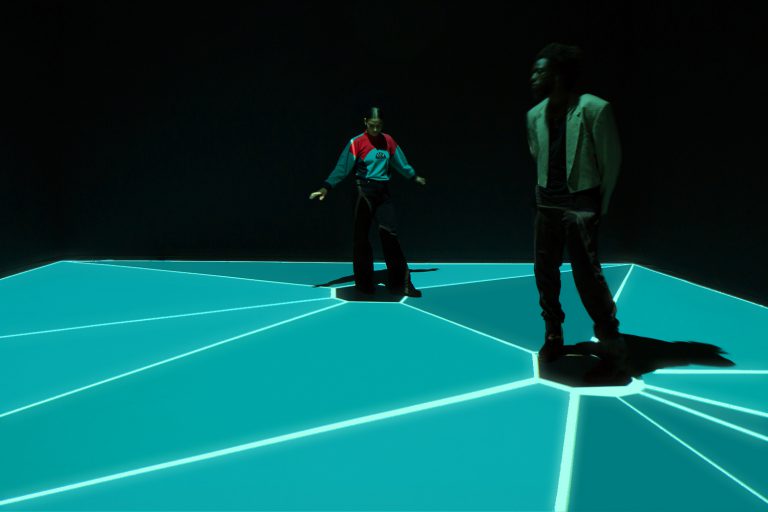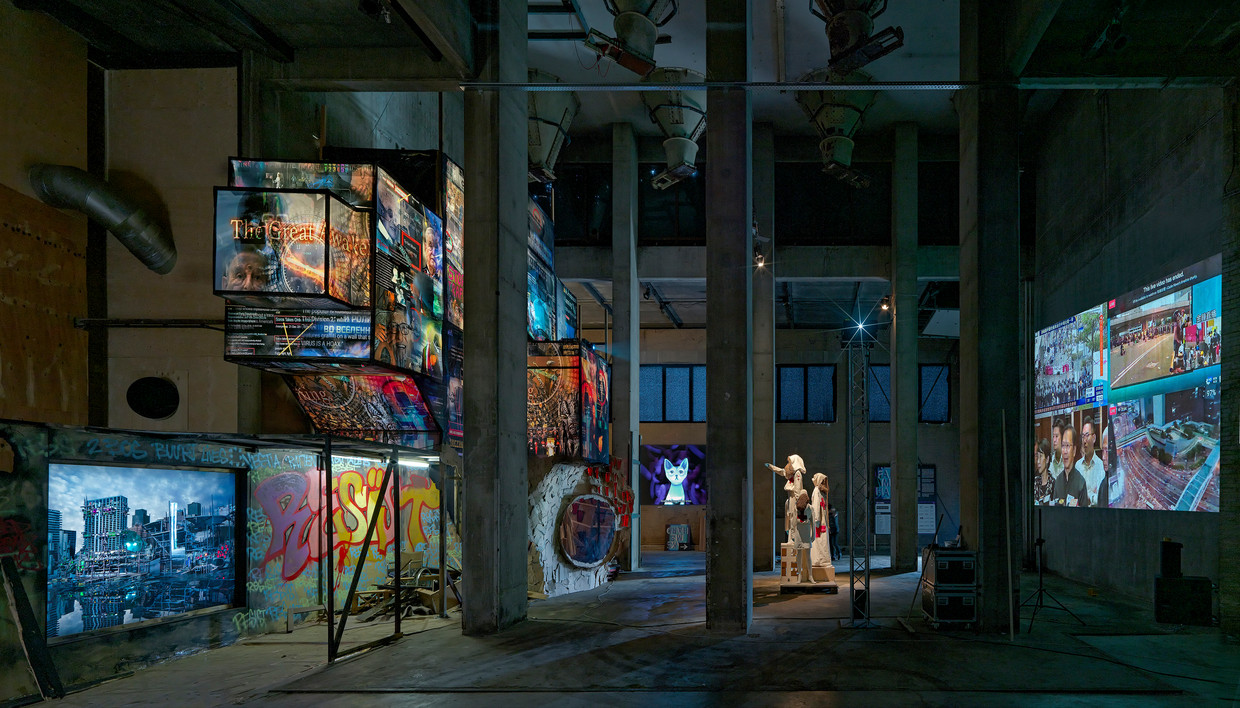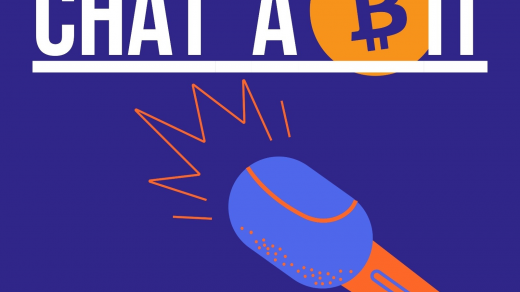The chief premise an edifice seemingly operates on in order to assume the role of a museum is that offering the visitors opportunities to learn something new, as well as of holding collections.^1 Consequently, the first associations one will have with the word “museum” are artefacts such as paintings, sculptures, installations etc. The common denominator therein is the nature of a collection being a physical and tangible one. However, with more exhibitions and even entire museums beginning to dedicate themselves almost exclusively to the virtual (i.e. visual) world and media art, how is the notion of physical objects as educational props challenged and who remains excluded from those experiences?
#aesthetic
In order to educate visitors either on a specific subject, culture, art historical period, material or similar, certain factors such as labels on the walls, actual three-dimensional objects which can be scrutinized from diverse angles or through the order of the objects in a room are imperative. Digital art, on the other hand, is not equipped with most of these attributes. What’s more, one might not connect digital art with an objective to educate visitors at all. After all, digital art heavily relies on aestheticism, as for instance the ongoing exhibition Van Gogh – Immersive Experience^2 showcases.

Therein, the artworks of van Gogh are brought alive through projector art. This means that his paintings are projected onto empty walls and digitally altered in a way that his characteristically thick brushstrokes move and flow. By creating an optical illusion which is so visually compelling, van Gogh’s art is given the chance to be experienced very differently. More viscerally, if you will, as you almost literally step inside van Gogh’s landscapes and “move” through them. While this certainly reinvents how we can look at and experience art, the educational aspect goes amiss.
Interaction
A museum which opened last year in Amsterdam, The N(e)xt Museum, counteracts pure aestheticism and demands interaction with the audience.^3 Granted, a larger section of the museum is, once again, devoted to singularly visually astounding landscapes and worlds a visitor can dive into, however, many of those can’t perform as such without the visitor’s active engagement. This incorporates A.I.’s: for example, depending on how many people enter a room, an A.I. changes the colors of a digitally created world which is displayed on a screen by measuring the body temperature of the people inside the room. Another installation of a tree and its roots (both consisting of LED cables) makes the tree glow up depending on the CO2 levels produced (i.e. breathed out) inside the space. With installations and visual/laser art like this, the museum’s name is rightfully inquiring, not only its own existence of evolution, but in general terms: What comes n(e)xt?


A third ongoing exhibition in Rotterdam, Fake Me Hard, focuses exactly on that question.^4 Not only will the visitor become an “enabler” by interacting with certain art object, but at the beginning of the exhibition an A.I. creates your individual profile which, depending on which artwork (video recreations of internet phenomena from the deep web, digital and analogue installations, computer generated worlds with the possibility of role-play, short documentary films etc.) you encounter, will by the end of your visit show you what it learned from observing your reactions and interactions with the exhibition. The idea behind it is to display how surreal the world of the digital is, which opportunities it presents to our environment, global infrastructures and our future increasingly (co-)dependent relationship with it. Thus, not only is the purpose to educate people on all things digital achieved but the visitors are given the impetus to reflect on a subject they are usually only familiar with in form of iPhones or Smart TV’s.

Experience the exclusion
Unlike traditional museums, the exhibitions and museums which focus on the digital are founded on the idea that the matter of a collection, and a tangible one at that, is not as crucial as the requirement to deliver a particular and immersive experience. This concept would be all fine and dandy were it not for a crucial aspect which all three art spaces fail to consider: how are people with disabilities, especially visual impairments, supposed to experience something that heavily centers around visuals? Believe it or not, people with disabilities enjoy going to the museum just as much as people without disabilities do.^5 They experience their visit differently but are still able to grasp the artworks and their meaning, intention and histories. More often than not, this is facilitated through museum guides who specialize in tours for people with visual impairments and are even able to provide tangible examples of an art object’s materiality. Upon visiting the aforementioned three exhibitions and museums, I did not detect a single museum guide or person with disabilities. Apparently, the involvement of the latter seems impossible. In other words, while digital environments will gradually be more incorporated in and change the art landscape, it is obviously a work in progress which has yet to implement inclusion into its program.
Sources:
^1 Eilean Hooper-Greenhill, Museums and the Interpretation of Visual Culture (London: Routledge, 1996), 24.
^2 “Antwerp,” Van Gogh Exhibition, accessed 26.09.2021, https://vangoghexpo.com/.
^3 “Exhibition,” The Nxt Museum, accessed 26.09.2021, https://nxtmuseum.com/exhibition/.
^4 “Exhibition,” Fake Me Hard, accessed 26.09.2021, https://fakemehard.nl/exhibition-1.
^5 Fiona Candlin, “Blindness, Art and Exclusion in Museums and Galleries,” International Journal of Art and Design 22, no. 1 (2003): 100.




Recent Comments